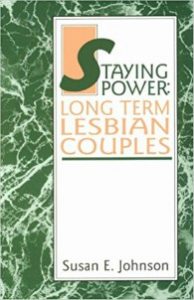Amazon Affiliate Link | Bookshop.org Affiliate Link
If you love reading advice columns but wish they were less straight, you may enjoy The Ex-Girlfriend of My Ex-Girlfriend is my Girlfriend as much as I did. This is a warm and witty book about queer love and relationships. Each thematically organized chapter offers short, straightforward answers to queries that are both universal, like how to come out, and specific, like what do when you’re a Capricorn working in the restaurant industry and your wealthy girlfriend refuses to use her inheritance to pay the rent for three years. Oh, lesbian drama, I love you so.
The book primarily draws from the author’s own life experiences, occasionally weaving in wisdom from her panel of queer experts. The answers from Mey Rude, a fat trans Latina writer, were particularly affirming, and humourist Samantha Irby was predictably hilarious.
The questions are fascinating and diverse, and the responses frequently surprised me by pointing out nuances in the questioner’s situation that I’d missed. For example, the answer to a twist on “Why don’t my girlfriend and I have sex anymore,” first asked the questioner to examine why she was pushing her partner for sex, after she’d already said no; later pivoting to prurient interest in the failed threesome the writer had mentioned as an aside.
Drawing strongly on the author’s personal experiences is both a strength and weakness here. There were a few times when Court’s personal stories felt tangential, and the questions were left barely addressed. For example, I was hoping for an insightful response to a question about how to deal with low self-esteem issues when your body is fatter than your thin, ripped girlfriend. Instead of utilizing resources on body positivity and fat liberation or the perspectives of her fat guest panelists, the book included a long story about Court’s history with hating her body that seemed to miss the point.
Many of the questions reflect common themes in queer women’s lives—falling in love, figuring out your identity, navigating queer society as a marginalized person, having tough conversations with lovers and fam. At it’s best, this book felt like chatting with a friend who cares deeply about you, but also isn’t afraid to call you on your bullshit.
Since many questions focus on firsts, like trying an open relationship, or learning to date long distance, most of the people featured are in their twenties. Still, every section includes questions from people 30+ as well. As a solidly middle-aged queer, I felt much of the advice was still relevant. Or at a minimum, highly entertaining.
I picked up this book thinking it would be fun to read aloud on a dyke road trip. Because the tone vacillates from poignant to lightly snarky, it’s not as consistently funny as I expected. But I was struck by how much of the book focuses on kindness, on how we can care for one another, and for ourselves. I recommend The Ex-Girlfriend of My Ex-Girlfriend is my Girlfriend for readers looking for a life guidance, or a reminder the joys and absurdities of queer community.




